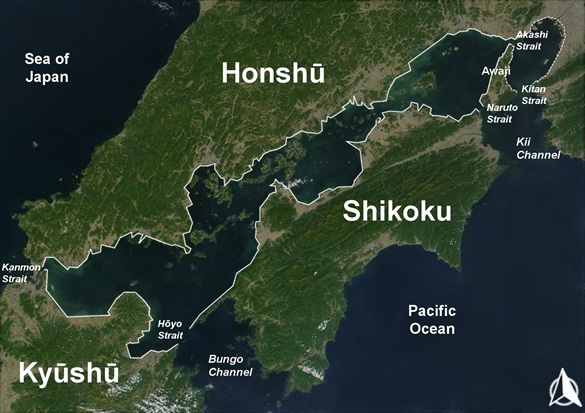STARVATION, OPERATION (MARCH–AUGUST 1945)
| When | March 27 to August 1945 |
| Where | The east coast of Japan; the Inland Sea lying between the main island of Honshu, Kyushu to the south, and Shikoku to the east of Honshu (see map); and Korea
|
| Who | Conceived by Adm. Chester Nimitz, commander-in-chief of the U.S. Pacific Fleet and also commander of Allied forces in the Pacific, but executed by Maj. Gen. Curtis LeMay’s 313th Bombardment Wing of XXI Bomber Command (after July 16, 1945, absorbed into the XX Air Force) |
| What | Carried out by roughly 160 specially adapted land-based B-29 Superfortresses flying night, low-altitude radar-mining missions and to a lesser extent by mine-laying submarines |
| Why | As an island nation dependent on outside sources of oil, raw materials, and foodstuffs, Japan was uniquely vulnerable to sea mine warfare. Operation Starvation proposed to bring Japan to its knees by cutting off all essential supplies from the outside world by laying mine fields in water routes and off Japanese seaports. A serendipitous corollary was that the operation also prevented Japan from provisioning its overseas military outposts. |
| Outcome | Unspectacular, discreet—and inevitably overshadowed by the detonation of two atomic bombs in August 1945—Operation Starvation was one of the great unsung successes of World War II. Operating from newly captured bases in the Mariana Islands (Tinian, Saipan, and Guam), the XXI Bomber Command flew 1,529 sorties and laid 12,135 mines in 26 fields on 46 separate missions. A total of 670 ships was sunk or damaged, accounting for more than 1.25 million shipping tons. Traffic in most of the main shipping lanes was halted, delayed, or diverted and Japan’s ports were left unusable. By August 1945 shipping had fallen to only one-quarter of May levels—themselves already dangerously low—and Japan’s economic collapse was all but inevitable. Indeed, the five-month operation was so effective that, had it been introduced earlier in the war, it arguably may have achieved Japan’s unconditional surrender without the attention-getting destruction of Hiroshima and Nagasaki. Aerial mining demanded less than six percent of the XXI Bomber Command’s total sorties, and only fifteen B-29s were lost in the effort. In terms of damage per unit of cost, Operation Starvation surpassed the U.S. Navy’s anti-shipping submarine campaign and the USAAF’s strategic bombing of Japanese oil production facilities and urban, commercial, and manufacturing centers. |
![]()
U.S. Air War Against Japan, 1944-1945 (Skip first minute)
![]()


 History buffs, there is good news! The Daily Chronicles of World War II is now available as an ebook for $4.99 on Amazon.com. Containing a year’s worth of dated entries from this website, the ebook brings the story of this tumultuous era to life in a compelling, authoritative, and succinct manner. Featuring inventive navigation aids, the ebook enables readers to instantly move forward or backward by month and date to different dated entries. Simple and elegant! Click
History buffs, there is good news! The Daily Chronicles of World War II is now available as an ebook for $4.99 on Amazon.com. Containing a year’s worth of dated entries from this website, the ebook brings the story of this tumultuous era to life in a compelling, authoritative, and succinct manner. Featuring inventive navigation aids, the ebook enables readers to instantly move forward or backward by month and date to different dated entries. Simple and elegant! Click 











